Archaeologists find ‘lost’ alphabet created by Biblical civilization 3,000 years ago
Archaeologists have finally found a lost alphabet that has been a mystery to scientists and has led to a 3,000-year-old civilization with biblical significance.
Since 1964, archaeologists have found 15 different tablets with strange engravings at the site of an ancient settlement in Jordan.
Thanks to new analyses, archaeologists have discovered that they were likely made by the Canaanites, an indigenous people who lived in the Middle East until the second half of the 13th century BCE.
The Canaanites lived in ‘the Promised Land’ from 3500 to 1200 BC, before being conquered by the Israelite tribes after their Exodus from Egypt.
The Canaanites are mentioned several times in the Old Testament, including in the books of Genesis, Leviticus, Deuteronomy, and Joshua.
Tablet 3524 consists of two fragments that fit together perfectly, even though they were discovered in completely different places
In the book of Joshua 3:10, God tells the Israelites that He will drive out the Canaanites before they arrive in the promised land.
The Israelites fought a series of wars against the Canaanites and eventually took over most of their land. This conquest took place in the second half of the 13th century B.C.
But before that, during the Bronze Age, Canaanites lived throughout the Southern Levant, that is, in modern-day Israel, Gaza and the West Bank, Jordan, Lebanon, and parts of Syria.
And it is from that time that the mysterious clay tablets date.
The study, published in American Association for Overseas Researchdiscovered that the script was written from left to right and contained 29 unique symbols of dots, vertical bars, and other abstract designs.
Researchers have suggested that the Inscriptions are short cultic proverbs that relate to the religious temple in which they were found. This temple was burned and destroyed thousands of years ago.
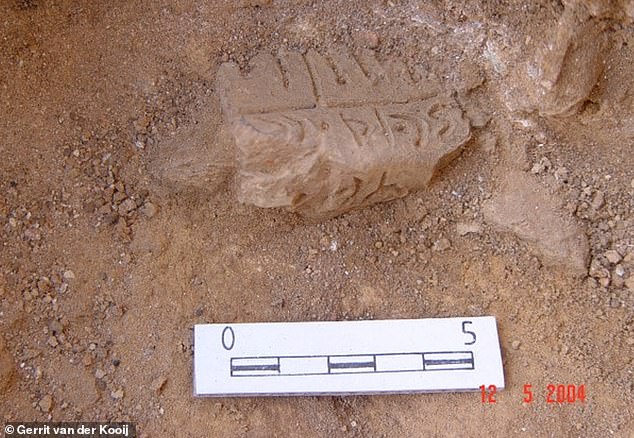
This fragment of tablet 3524 was found in a large hall of the temple
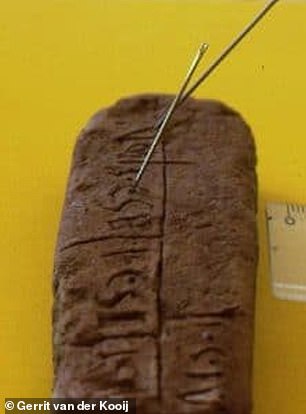
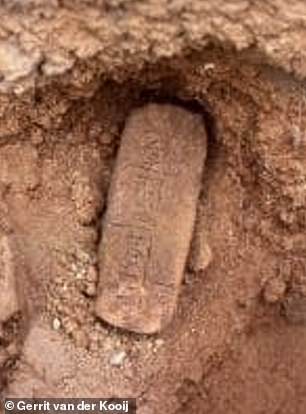
Researchers have suggested that the inscriptions are short cultic proverbs associated with the religious temple in which they were found, which was burned and destroyed thousands of years ago.
The temple was located in an ancient settlement called Deir ‘Alla, in the center of the Jordan Valley, which runs along the Jordan River from the Sea of Galilee in Israel to the Dead Sea.
The structure was damaged during a period of widespread destruction that spanned the 13th and 12th centuries. Archaeologists discovered the tablets in a badly burned section of the excavation site.
The team also found ceramics among the ruins, including cups and ceremonial vessels, as well as armor.
Statues were also found that were gifts from the Egyptian queen Twosret, providing an indication of the date of the destruction not long after 1180 BC.
The script of the tablets showed similarities to Proto-Sinaitic script, a writing system from the Middle Bronze Age that could be the precursor of this alphabet.
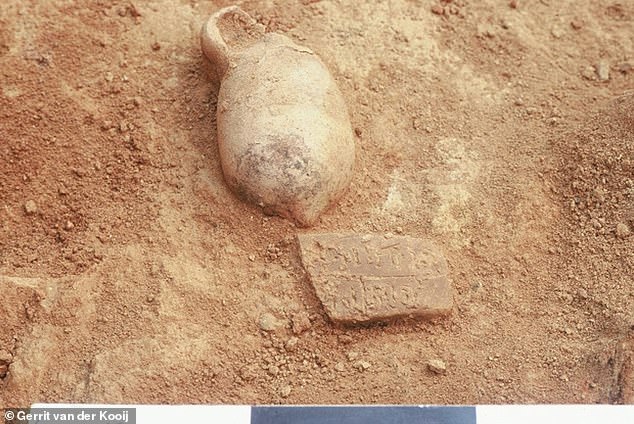
A fragment of tablet 3524 was found next to a Late Bronze Age juglet. The team also found ceramics among the ruins, including beakers and ceremonial vessels, along with armor
The texts also resemble the proto-Canaanite alphabets found at other Late Bronze Age excavation sites, which were written by people familiar with ancient Egyptian writing.
But the tablets also showed some unique combinations of signs, including two where another sign resembled an eye.
Scholars have identified this sign as an ‘ayin’, which is also the Hebrew word for ‘eye’.
These similarities and patterns have helped scientists unravel the meaning of the symbols on the tablets and decipher their mysterious message.
Comparing the tablets with the grammar of late Hebrew, which preserves older Canaanite forms, revealed that the tablets appear to contain “short ritual utterances” and “poetic proverbs.”
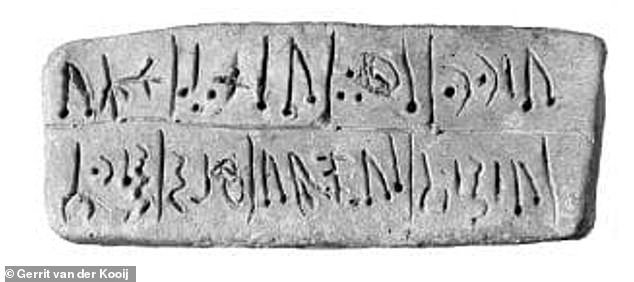
Tablet 1440 is one of the first to be found in 1964. Scholars believe it refers to sacrifices and prophetic research
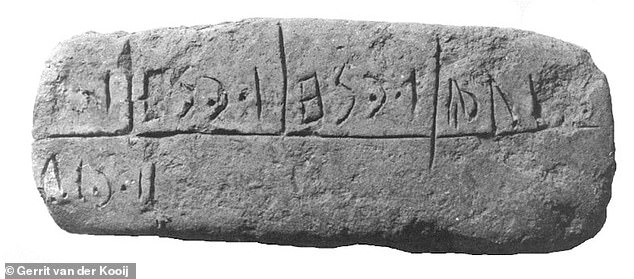
Tablet 3291 shows repetition of three signs (semicircle and dot, single dot and vertical line) in three separate words, indicating a consistent grammatical figure
This suggests that the tablets were used in cultic rituals that took place in the Deir ‘Alla temple.
But researchers will need to do more research to fully translate the results.
By studying these tablets, scholars have gained greater insight into the Canaanite language spoken in this region before the Israelite conquest.
But there are more questions that need to be answered.
As far as experts know, literacy did not become widespread until the late Iron Age.
During the Bronze Age, writing occurred only in isolated areas and was mainly associated with the writing practices of powerful societies, such as the Egyptian state.
So scientists are unsure why written tablets would have been found at Deir ‘Alla at all.
One possible explanation is that alphabetic script was in fact used by small groups of scribes, possibly mainly in temples.
This would mean that the Deir ‘Alla tablets are the last remnant of a writing practice that originated in temples in Canaan before they collapsed.
